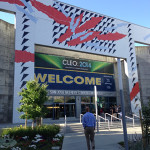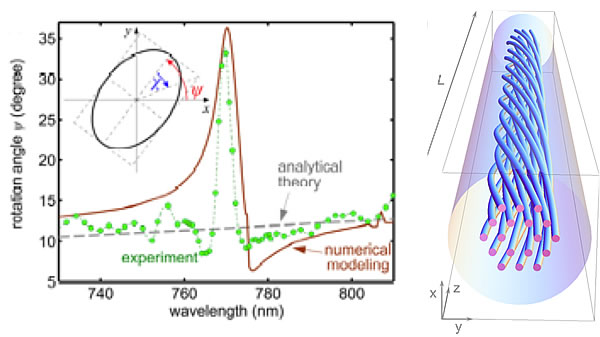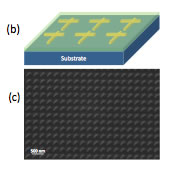By Howard Lee

I arrived to the nice city of San Jose to attend the CLEO 2014 conference for the first time. Upon entering the convention center, I found a sea of people at the front desk getting conference materials and registering. Despite the crowd, everyone looked excited about the program today! After making my way through all the people, I headed over to session SM2N “Modes in fibers”.
Studying Optical activity in photonic crystal fiber
One of the exciting talks of the session is presented by Dr. Gordon Wong from Philip Russell’s group in Max Planck Institute for the Science of Light in Germany (which is also the group I obtained my PhD from). Gordon presented their latest results on studying optical activity (namely circular birefringence and circular dichroism (CD)) in a special kind of fiber, which is helically twisted photonic crystal fiber (PCF). Different from other metallic spiral plasmonic structures, the twisted PCF provide a novel platform to study light properties in a twisted space with relatively long interaction length where metallic structure cannot be achieved. In such twisted fiber, additional phase matching is allowed to couple the core mode to the orbital angular momentum resonances, leading dips in transmission. At the resonance, they observed strongly enhanced circular dichroism. The important point here is that the CD could potentially be enhanced by varying the twisted rate and the fiber’s microsctructure, providing extra degree of freedom for altering the angular optical properties without any metal or nanofabrications required. (SM2N.1)[Phys. Rev. Lett. 110, 143903 (2013), J. Opt. Soc. Am. B 30, 2921–2927 (2013)].

(Left) Measured (colored dots) and calculated (solid curve) response in the vicinity of an OAM resonance at 770 nm for linearly polarized input light and a sample length of 9 mm. (a) The polarization rotation angle ψ measured experimentally (green dots) and calculated numerically. The rotation angle of the core light, calculated analytically using symmetry properties and perturbation theory [1,2], but ignoring OAM resonances in the cladding, is shown as a dashed line. (Right) Schematic of the twisted photonic crystal fiber. [SM2N.1]
Sensing for chiral molecule using metasurface
A really interesting talk I found in the afternoon was presented by Dr. Yang Zhao (FM3K.6). As there is serious demand to determine the chirality of molecules for achieving an enantiomer-pure chiral drug, many researches have been carried out to use chiral EM wave (optical chirality) for sensing such chiral molecules. However, when the amount of molecules is small, using optical chirality for sensing is normally not efficient. Zhao discussed in her talk how they use a near field chiral enhancement in a metallic metasurface to detect those molecules through circular dichroism (CD). The multilayer metasurface is made of gold by multiple Ebeam lithography steps. The second layer of pattern is twisted with certain angle with respect to the first layer (see figure on right), which leads to the origin of the CD. Using an analytical approach together with a careful design and fabrication of the metasturcture, they demonstrated a measurement of the CD signal for monolayer of protein and shows the metasurface providing an ultra-sensitive probe to enhance CD measurements, in which typical optical materails/structures cannot be achieved.
My day has not disappointed so far – I am looking forward to what the rest of the day has to offer.
Posted: 10 June 2014 by
Howard Lee
| with 0 comments